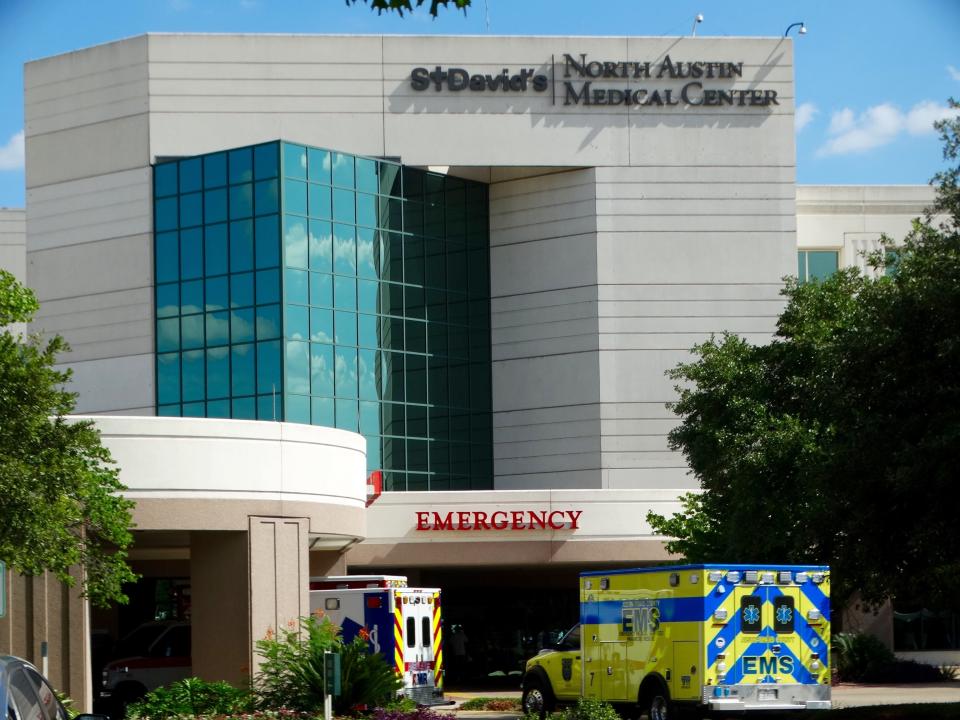Austin-area hospitals, dialysis centers able to maintain operations during ice storm
This week's ice storm brought back memories of February 2021. Unlike that week of Austin being immobilized, facing widespread medical emergencies and at least 28 storm-related deaths in Travis County, the medical system has held up this week, health officials say.
Four local hospitals did lose power, but they were able to use their backup generators to continue patient care.
St. David's North Austin Medical Center briefly lost power on Wednesday morning and was able to switch to generators. Power was restored quickly.
"The safety of our patients was not compromised at any time. In an abundance of caution, all remaining non-emergent procedures are being rescheduled," said Tom Jackson, CEO of the hospital. The rest of the St. David's hospital system had power.
On Thursday, Heart Hospital of Austin lost regular power for a few hours, but it was restored.
On Wednesday afternoon, Ascension Seton Northwest was operating on backup generators. The hospital was "operational with minimal impact to patient care," an Ascension Seton statement said. The power was restored by the city by Wednesday night. Ascension Seton's other hospitals had power.
Health needs: Austin's We Are Blood needs more donors after being closed by ice storm

On Wednesday afternoon, Baylor Scott & White hospital in Taylor had lost electricity and was on backup power. "Our team is monitoring and responding to challenges as they arise, which includes engaging backup power sources when needed," the hospital said in a statement.
St. David’s Emergency Center in Bee Cave lost regular power on Thursday and was relying on generators.
The hospitals train for these emergency situations. "Throughout the year, our hospitals prepare for a variety of emergency situations, which includes testing of backup power sources and reviewing and updating emergency response plans on a regular basis," Ascension Seton said in its statement.
St. David's CEO David Huffstutler said: "Our facilities continuously prepare to safely provide care for our communities during a variety of situations, including rapidly evolving weather conditions. Throughout the year, our teams test backup generator power sources, host drills, practice emergency communications systems, and continuously review and update emergency response plans."
How bad was the Austin ice storm?Starting with 2021, compare how the past three winter storms have looked in Austin
Baylor Scott & White Health said: "We continuously prepare throughout the year to provide care safely to our communities in a variety of situations. This preparedness includes hosting drills, practicing emergency communications systems and more."
What happened in the 2021 ice storm?
This was a different situation than in February 2021 when most hospitals continued to have power because they were prioritized on the grid, but then had trouble regulating their heating systems because of low water pressure or no water to feed their boilers. Parts of the city were without water for days because of frozen pipes breaking. During that time, some patients at St. David's South Austin Medical Center had to be moved to other hospitals.
In this year's storm, St. David's South Austin has not lost power, although areas around it have.
During the storm two years ago, many dialysis centers were not open and people couldn't get to them for days. This week, dialysis centers were mostly able to remain open for patients, who often need hourslong treatment several times a week to keep their blood free of toxins.
Capital Metro did suspend specialized transportation services on Wednesday that take people on dialysis to such appointments because of the ice, but it resumed the service at 10 a.m. Thursday.
The 2021 freeze: St. David's, other hospitals struggle with loss of water pressure, heat
Dialysis provider Fresenius Medical Care saw its North and South Austin clinics lose power, but it was able to send patients to other clinics with power. It also rescheduled patients for later appointments during the week.
Da Vita Inc. dialysis centers have been working with patients to see if they have transportation to their clinics, most of which stayed open. They have also extended hours to get more patients in and have rescheduled patients who could not get to a treatment center on their scheduled day.
Austin Public Health and the city of Austin have been running cold weather shelters during the day and overnight. In the first two days of the storm, Austin-Travis County Emergency Medical Services responded to 54 requests for transfer to a cold weather shelter. EMS also responded to 31 environmental exposures (hypothermia), 84 traffic collisions, 42 falls due to ice and 1 carbon monoxide exposure.
The Austin Fire Department did bring a new oxygen tank to a person who was running out of oxygen.
This article originally appeared on Austin American-Statesman: Austin-area hospitals, dialysis centers maintain operations in storm

